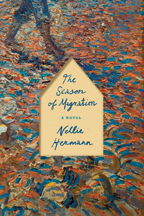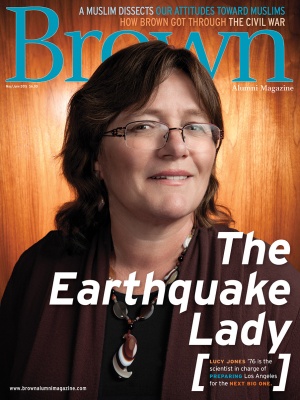The Season of Migration by Nellie Hermann ’00

There is a moment in the new novel by Nellie Hermann ’00 when a young Vincent van Gogh stands in awe at the sight of a wheat field. As the stalks dance in the wind, in what Hermann in The Season of Migration calls “a symphony of movement, color, and sound,” van Gogh notices that “everything shimmers, glittering with life and peace; his body is erased as he stands there, his self folded into what he sees.” This moment is a microcosm of the novel itself. Contemplative and lush, it captures van Gogh’s electric need to feed his senses and commune with the world and the people around him.
The Season of Migration is a fictionalized account of a little-known period in van Gogh’s life. From 1878 to 1880, having failed in his studies to become a minister, van Gogh takes a position as a “lay preacher” and arrives at the Borinage, a bleak Belgian coal-mining region, to spread the Gospel. “The mine was terrifying and awesome,” he writes to his brother Theo upon first seeing it. “Looking at the landscape, the trees dead and nearly dead, the ash heaps, the hills of discarded coal, the huts collapsing into one another, the thick smoke pouring from the chimneys and blocking the sun, I nearly fell to my knees.”
The novel alternates between third-person narration and letters that van Gogh writes, but never sends, to his beloved Theo. A Paris art dealer, Theo was famously the primary source of support and encouragement throughout Vincent’s life, but during this period their usually voluminous correspondence falls silent. Here Hermann imagines why: a temporary falling-out, born of Vincent’s deteriorating mental health and the traumatic events he experiences at the Borinage.
We meet van Gogh as a man torn with self-doubt. He loves God and comes to the Borinage with a naïveté and earnestness that embarrass even him. Yet he also lacks the unshakable faith of his father, a minister, and wants so much to understand the lives of the miners and their families that his desire consumes him—erases him, almost. Ultimately he finds redemption not in God but in art, in his ability to capture the beautiful imperfection of the world around him.
Hermann is a masterful wordsmith, and the book’s prose shimmers like van Gogh’s wheat field with the language of light and dark, of sun and earth and the five senses. Yet the words are not beautiful for their own sake. Their vividness, their saturation, help us see the world as van Gogh must have seen it: riotous, overwhelming. The book is paced slowly, and the reader spends the first chapters somewhat disoriented. But van Gogh so clearly has something important to tell us that it’s not unpleasant to walk with him as his tale unfolds. By the time the action builds towards its terrible climax, we’re surprised to discover we love this dismal place as much as van Gogh does.





